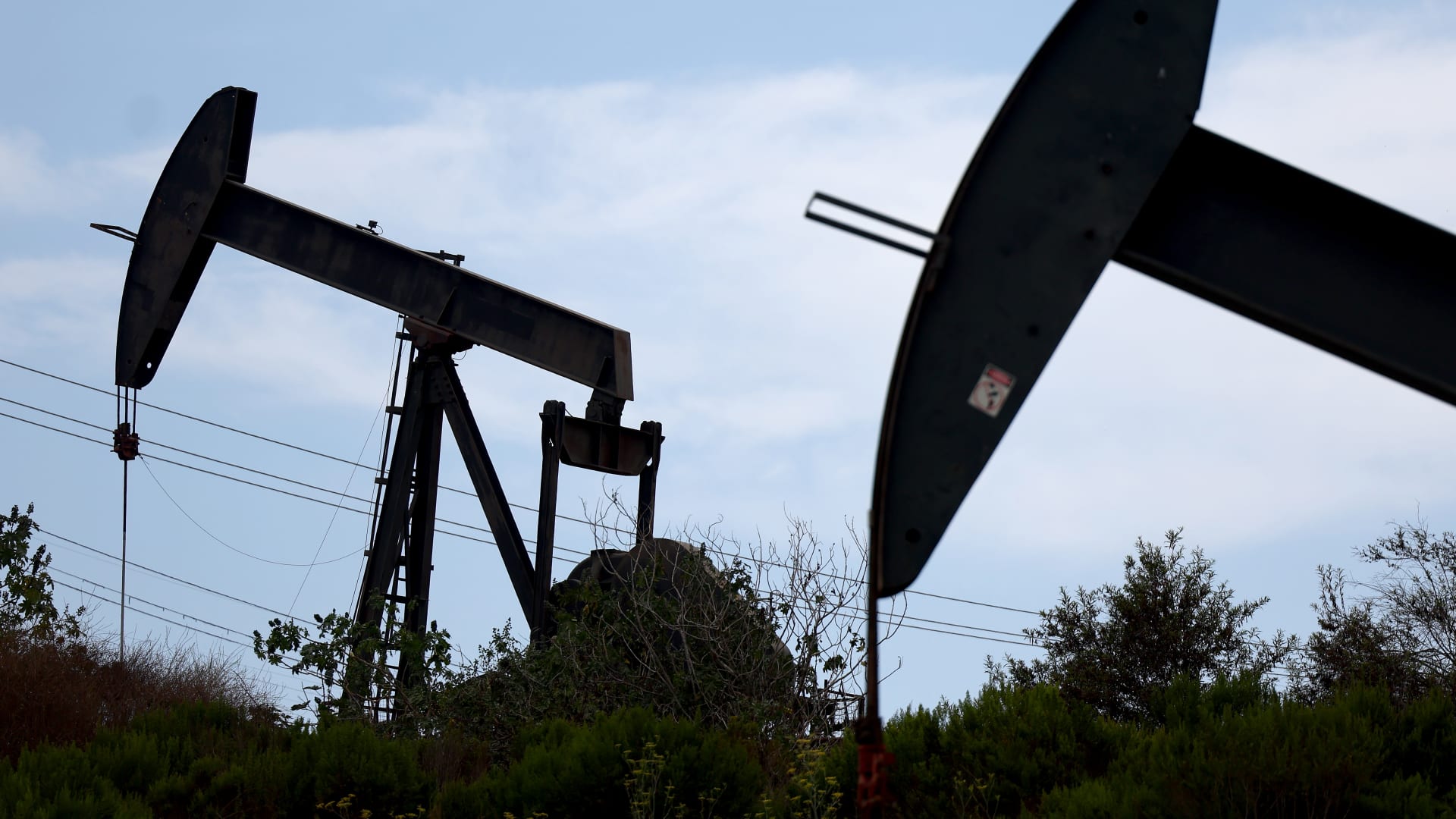Oil pumpjacks operate in Los Angeles, California, July 31, 2023.
Mario Tama | Getty Images
OPEC+ will raise oil output from November by 137,000 barrels per day (bpd), it said on Sunday, opting for the same fairly modest monthly increase as in October amid persistent worries over a looming supply glut.
The group comprising the Organization of the Petroleum Exporting Countries plus Russia and some smaller producers has increased its oil output targets by more than 2.7 million bpd this year, equating to about 2.5% of global demand.
The shift in policy after years of cuts is designed to regain market share from rivals such as U.S. shale producers.
Oil prices settled higher on Friday but posted a weekly loss of 8.1% after news of potential increases to OPEC+ supply.
Brent crude futures closed up 42 cents, or 0.7%, at $64.53 a barrel by, while U.S. West Texas Intermediate crude was up 40 cents, or 0.7%, at $60.88.
For the week, Brent fell 8.1%, the largest weekly loss in over three months. WTI tumbled 7.4% in the week.
Prices are trading below this year’s peaks of $82 per barrel but above $60 per barrel seen in May.
OPEC+ members divided on production levels
In the run-up to the meeting, Russia and Saudi Arabia, the two biggest producers in the OPEC+ group, had different views, sources have said.
Russia was advocating for a modest output increase, the same as in October, to avoid pressuring oil prices and because it would struggle to raise output owing to sanctions over its war in Ukraine, two sources said this week.
Saudi Arabia would have preferred double, triple or even quadruple that figure — 274,000 bpd, 411,000 bpd or 548,000 bpd respectively, because it has spare capacity and wants to regain market share more quickly, sources said ahead of the meeting.
OPEC views the global economic outlook as steady and market fundamentals healthy because of low oil inventories, it said in a statement on Sunday.
OPEC+ output cuts had peaked in March, reaching a total of 5.85 million barrels per day (bpd). The cuts were made up of three elements: voluntary cuts of 2.2 million bpd, 1.65 million bpd by eight members and a further 2 million bpd by the whole group.
The eight producers plan to fully unwind one element of those cuts — 2.2 million bpd — by the end of September. For October, they started removing the second layer of 1.65 million bpd with the increase of 137,000 bpd.
The eight producers will meet again on Nov. 2.

